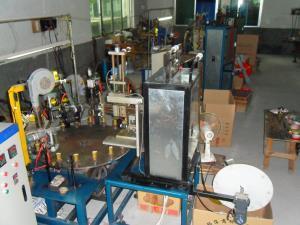Application and requirements of glue cap machine in winery
Rubber caps can not only effectively waterproof, moisture-proof, dust-proof, anti-pollution, but also better protect the products in circulation, widely used in daily plastic products, ceramics, handicrafts, batteries and other industries. Today, the glue cap machine manufacturer Saiwei Let me introduce you to the rubber caps:
At the beginning, most of the rubber caps were tin-plated lead sheets, and the effect of tin-plating was to separate lead and wine. In the early 1990s, this "lead cap" was gradually screened out, not because of the influence of lead on wine, It is because of the negative impact of lead on the environment. Today's caps are generally made of tin, aluminum, PVC plastic or aluminum-plastic composite materials. 55% of wineries use tinfoil caps and 39% of wineries use PVC caps ,32 percent of wineries use aluminum-plastic composite caps, and 11 percent of wineries use aluminum caps. Although tinfoil caps dominate the 4 types of caps, tinfoil caps do not monopolize the cap market. Breweries The other 3 types of rubber caps will also be selectively used according to price, product function and image among consumers. Tinfoil caps score higher in product function and consumer image. In fact, the popularity of tinfoil caps is largely Benefit from the consumer's product image: compared to expensive PVC, aluminum-plastic composite or aluminum plastic caps, tinfoil caps represent high quality.
The tin foil cap is famous for its smooth and seamless appearance and easy to use. It is generally used for high-grade wine packaging. After a single plastic cap is formed, it is first screen-printed, and then close to the neck without any wrinkles. It is first lithographic printing, and then formed on the bottle. The rubber cap made of soft tin foil is easy to disassemble and not easy to wear, which is beyond the reach of the previous aluminum foil rubber cap.
The price of PVC (polyvinyl chloride) caps is better than the other three caps. PVC caps appear after tinfoil and aluminum-plastic composite caps, and their main purpose is to meet customer requirements for low-cost caps. Each tin foil cap is 10 Cents, aluminum-plastic composite caps are 5 cents per cap, and PVC caps are only 3 cents on average, which can greatly save the packaging cost of popular wine. But if wineries add tear strips, hot foil or embossing when ordering PVC caps , the cost of the rubber cap will also increase (the same is true for the aluminum-plastic composite rubber cap).
PVC caps are very low in both "overall ranking" and "image ranking", but this 2-in-1 seam heat-shrinkable cap is very popular in many wineries because of its high quality and low price.
The cost of aluminum-plastic composite caps is 45 percent lower than that of tin foil caps. Users' evaluation of the price of aluminum-plastic composite caps is second only to PVC caps. It is precisely because of the advantage of capital that aluminum-plastic caps have a place in the wine industry.


